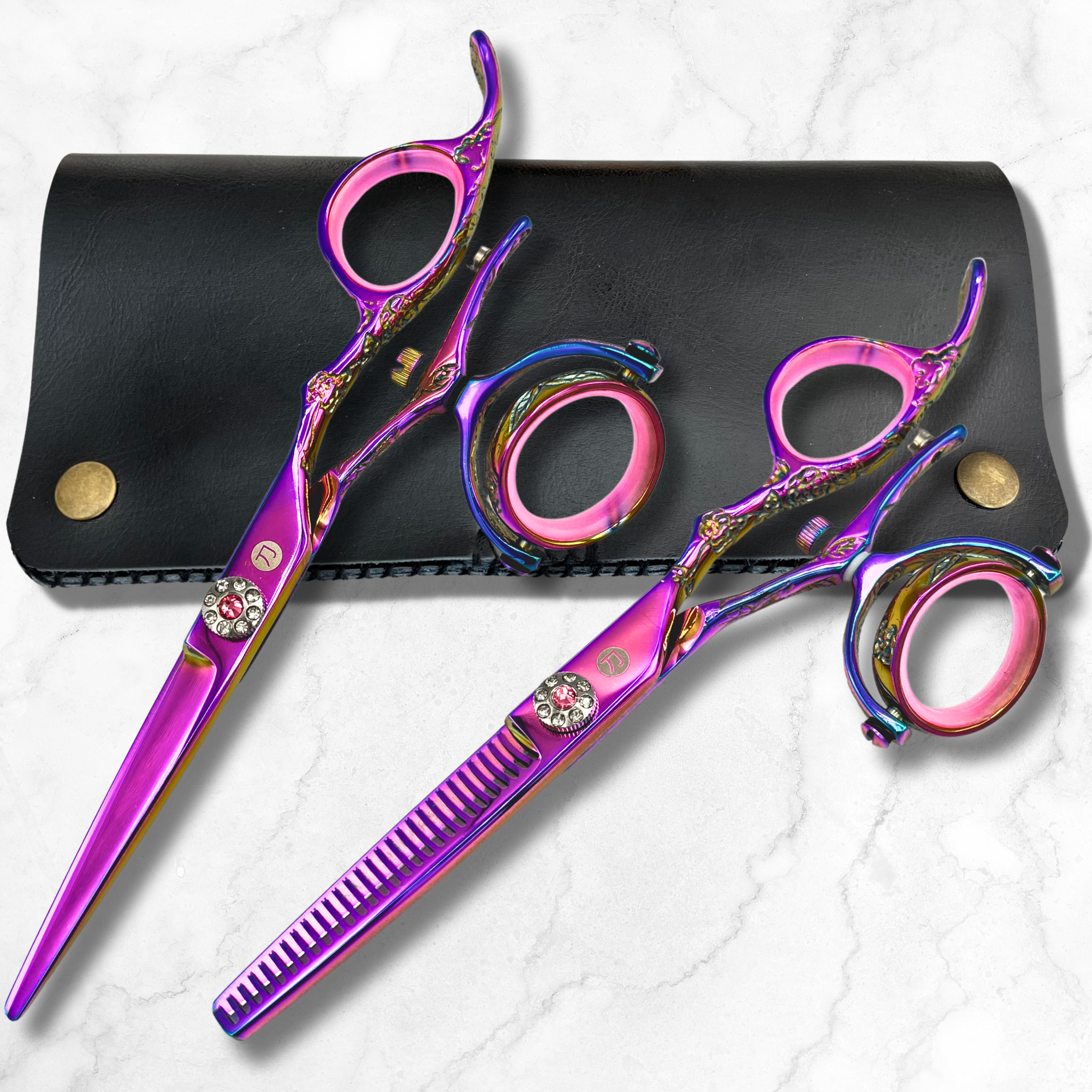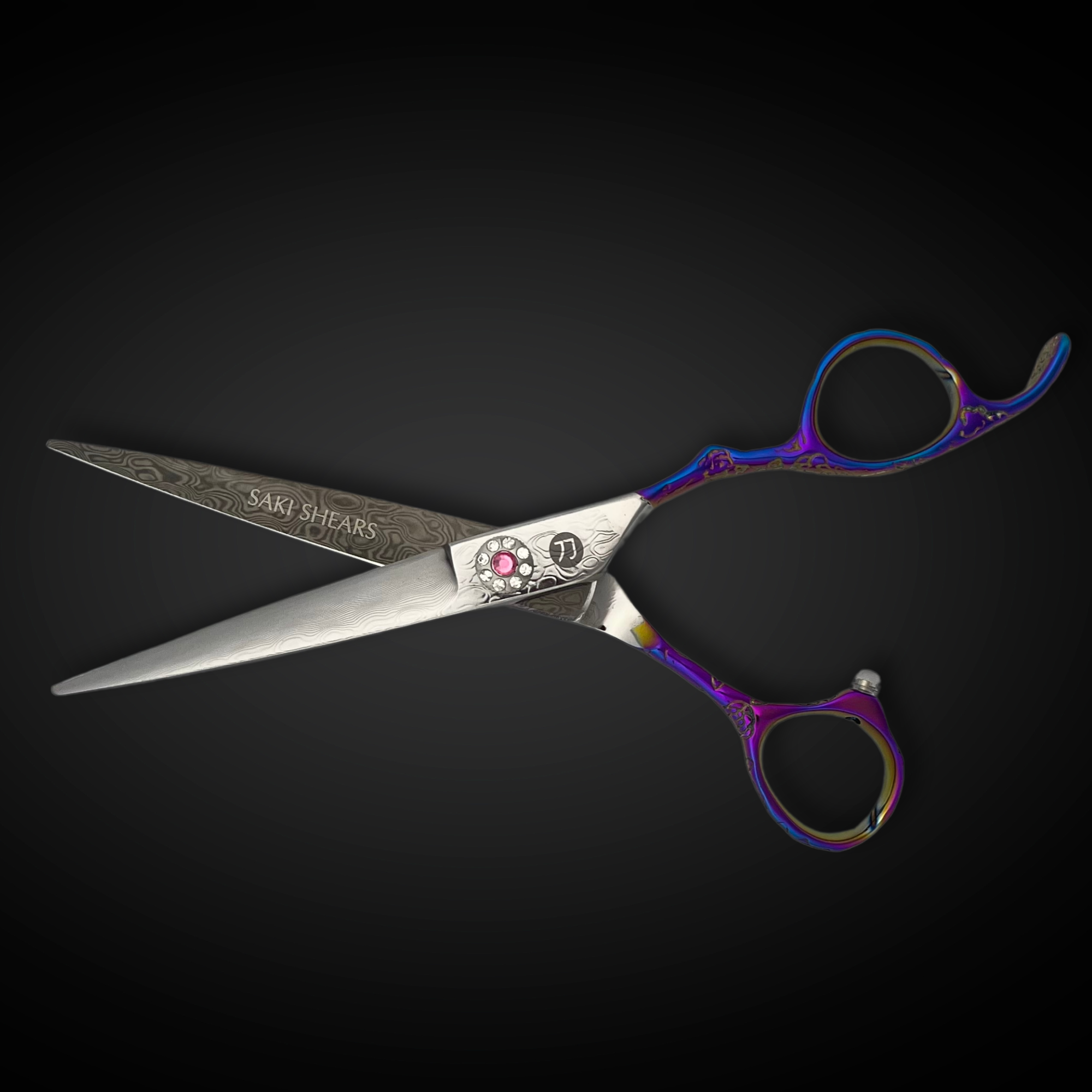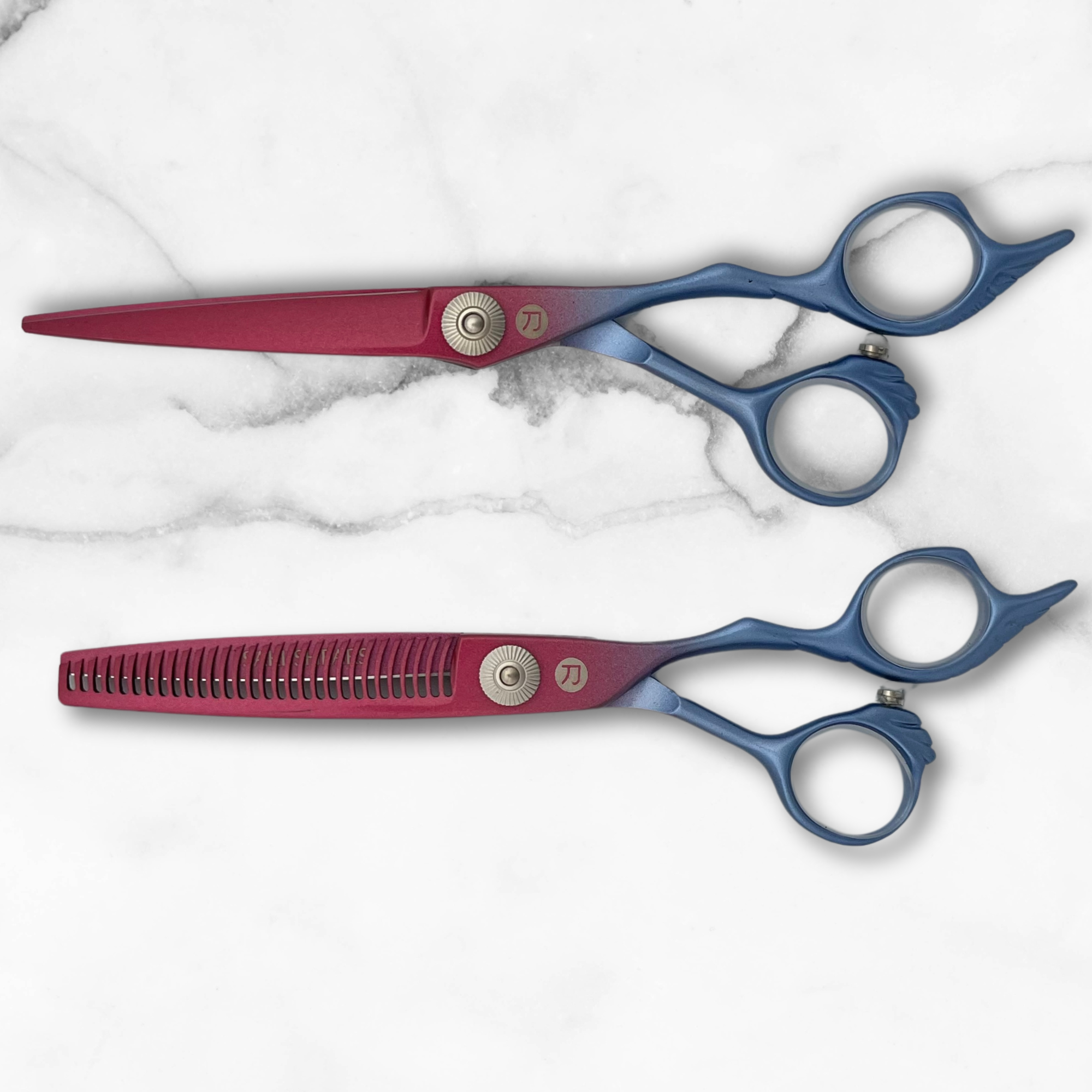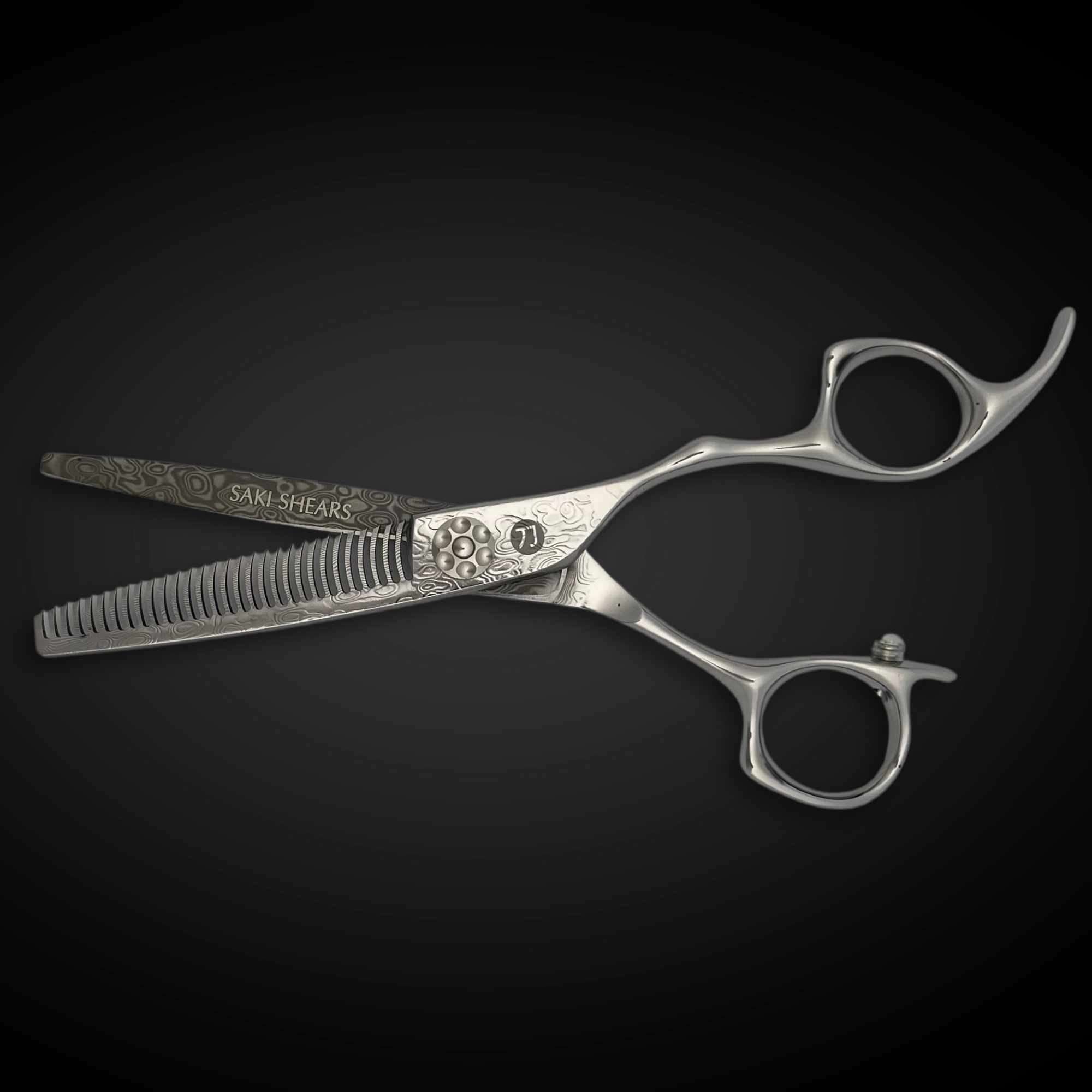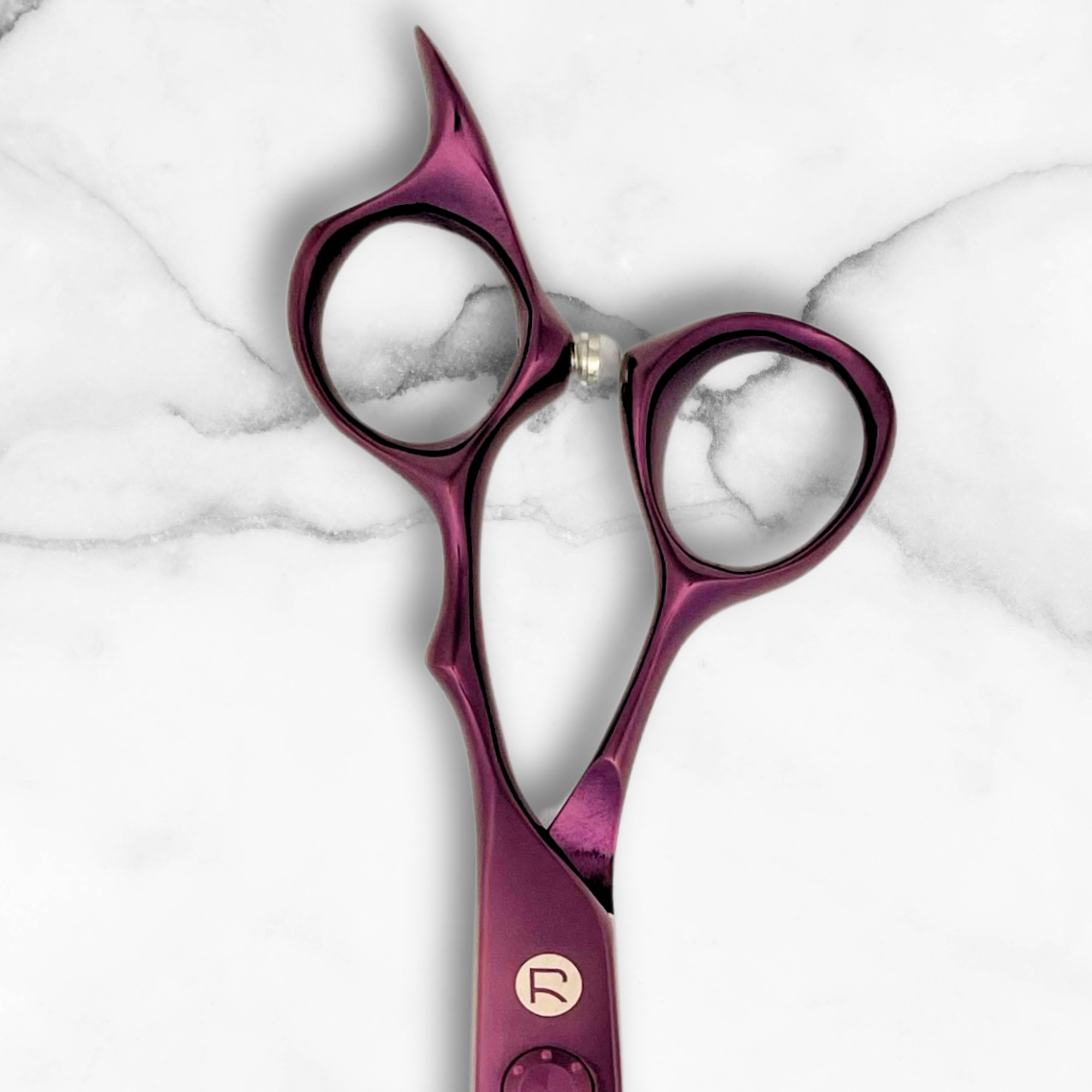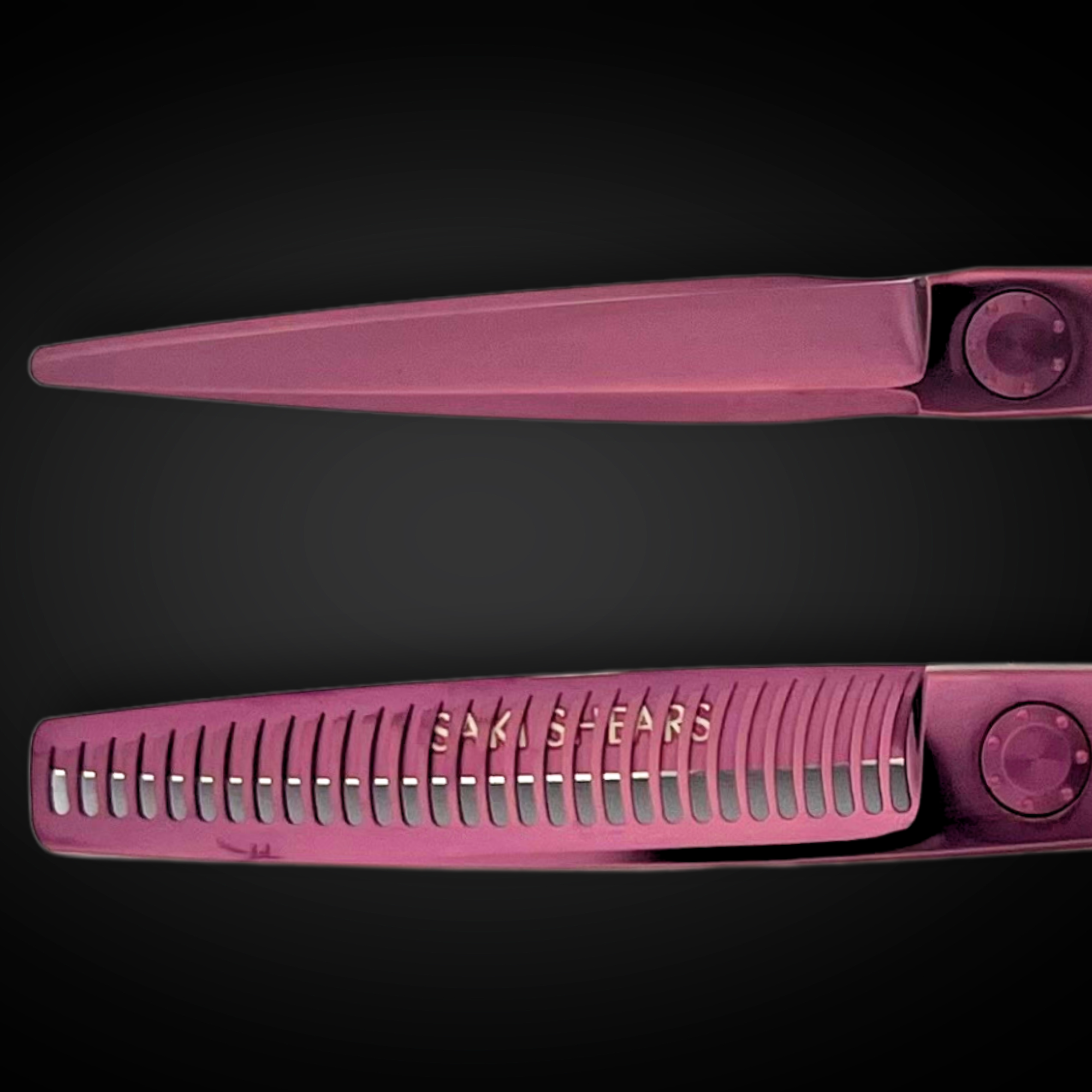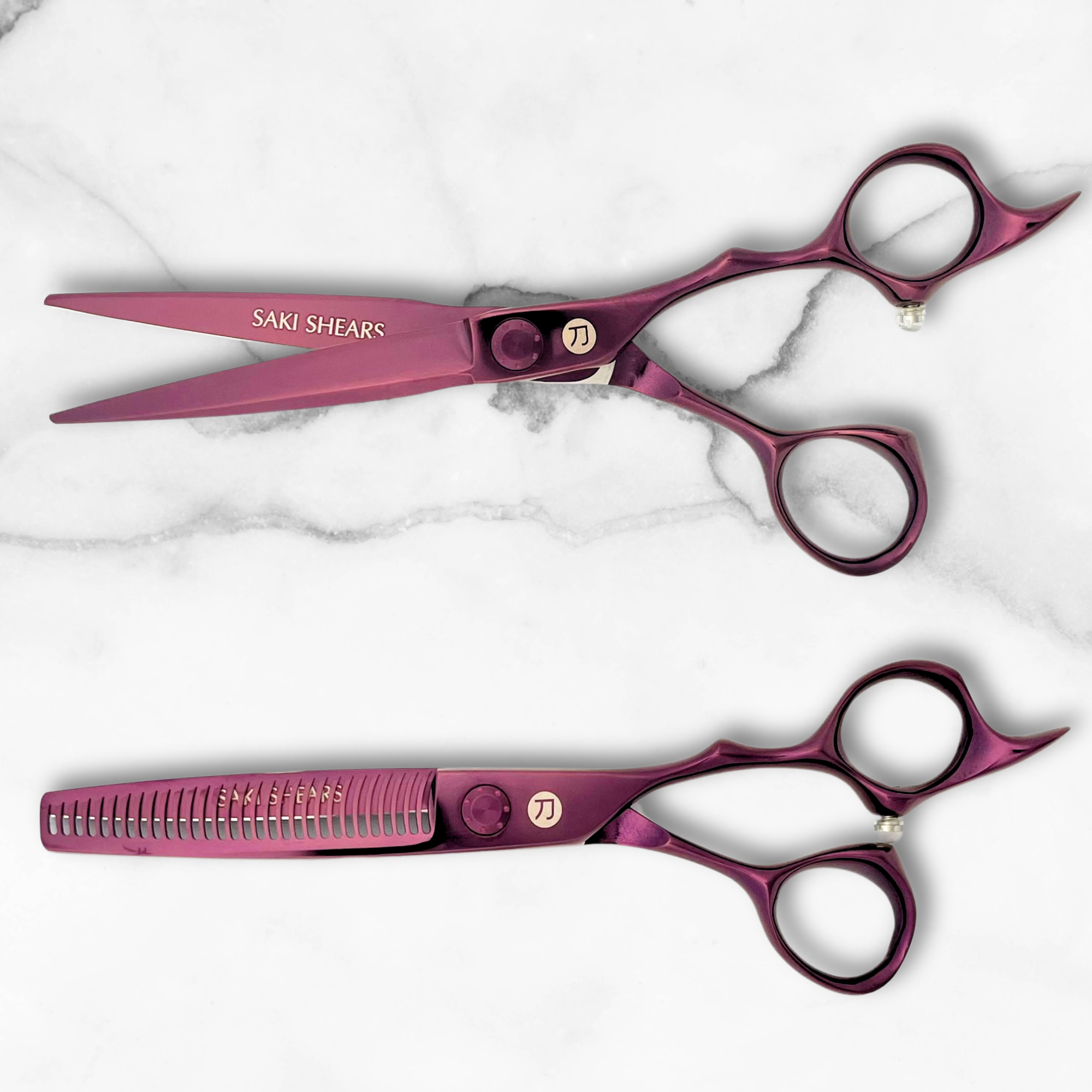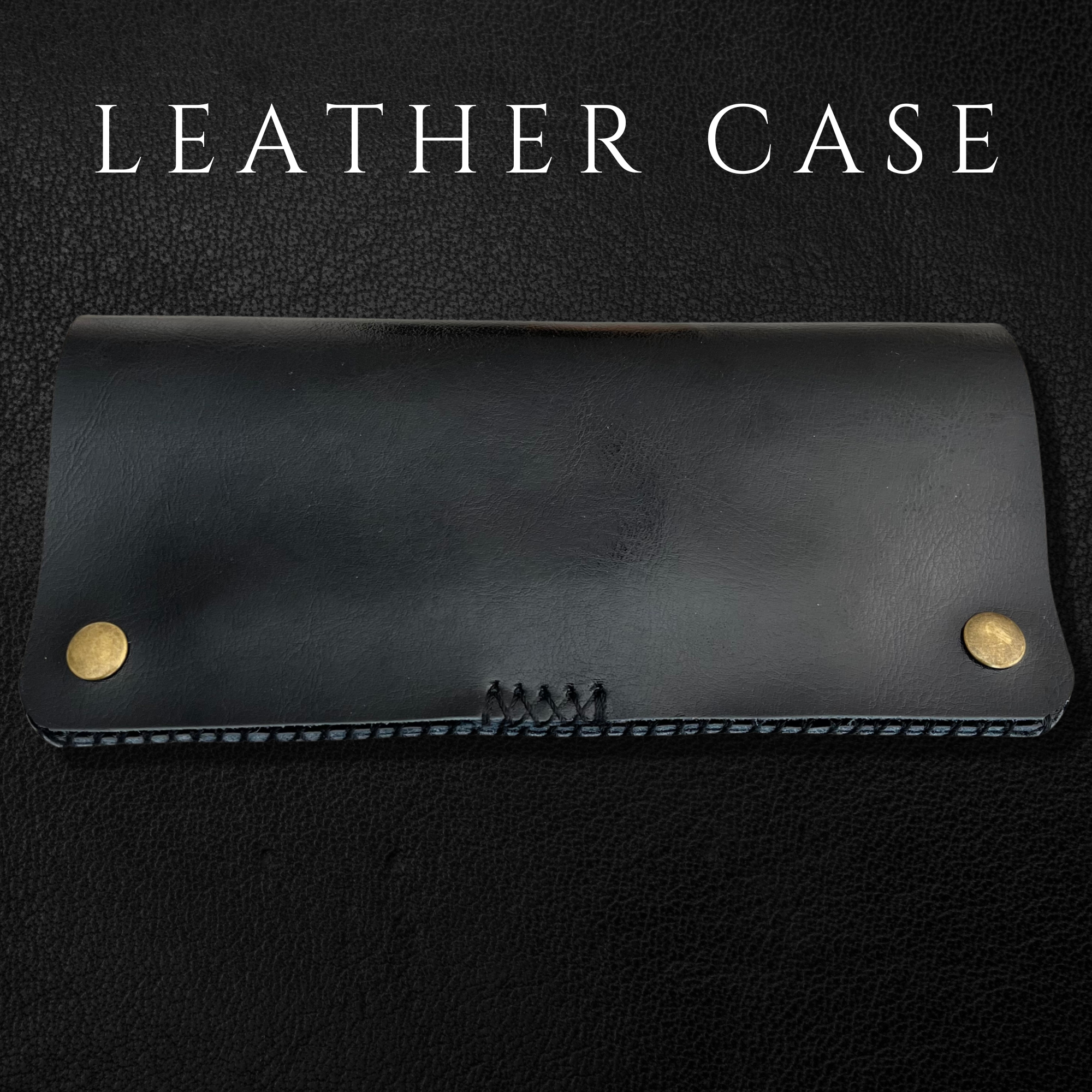Should I Choose a Short or Long Hair Cutting Shears?
There are many different sizes of hair cutting and thinning shears. The most common sizes are 5.5", 6.0", 6.5" and 7.0" shears. So, how do you choose the correct size for your hands and cutting style?
You may have received a variety of conflicting pieces of advice on the appropriate length shear to use throughout your time spent in school and while working in your salon or barber shop, respectively. According to the beliefs of certain individuals, the length of your shear should be determined by a part of your body. However, others believe that the length of the shear ought to be determined by the purpose for which it is going to be used. The functions of shears designed for cutting short hair and those designed for cutting long hair are optimized for the particular styles of hair and cuts that call for them. We strongly suggest that you get both a long and a short pair of shears so that you may choose the pair that is most suitable for each individual customer. But even if you believe that having a single length of shear that can be used on any sort of hair is the most convenient option for you, thinking about the primary kinds of haircuts that you do is an extremely vital step in determining what that shear should be.
Looking for a Short Hair Cutting Scissors?
- 5.5 inch, zero-offset hair cutting scissors from Saki Shears; Saki Odachi. For barbers and stylists trained in the Vidal Sassoon style, you will feel comfortable with this new cutting shear from Saki Shears.
- 5.5 inch, swivel shears with pink finger inserts; Saki Sakura Swivel scissors. The single swivel thumb is great for horizontal cutting action. The natural cutting position alleviates wrist and thumb fatigue. Saki Sakura is perfect for slide cutting and works equally well on wet or dry hair.
Barbers using a long hair cutting shear have the following advantages:
Any shear that is between 6-7 inches in length is considered to be a long shear, with 6.5 and 7 inches being the most common lengths. When cutting with a comb, using scissors over the comb, or cutting within the comb to create a perimeter against your client, as well as when cutting the base of a bob or layers, your long shear is the tool you should go for. When performing these methods, using long shears allows you to take more hair off with each cut, which not only saves you time but also gives you a more exact and balanced cut. This is because it is simpler to line up your sections when you utilize the added length of the shears as a guide. Longer shears are preferable for cutting curves, whether you are doing overhand layers or the rounded perimeter of a lengthy cut. This holds true regardless of the kind of cut you are doing. Because of the greater length of the blade, you are able to swivel the shear, which makes it simpler to produce smooth progressive curves with the cut, complementing the contour of the head and providing a more organic appearance. Historically, barbers have been the only ones to use long shears due to the advantages that shears have over combs. However, now that more men are willing to invest both time and money into their hair, it is imperative that barbers have access to long shears in order to be able to perform the techniques that are necessary to meet customer demand.
The most popular long hair cutting shears from Saki Shears include the Saki Tanto and Saki Precision models. These shears range from 6.5" to 7.0". We also carry a professional set of long hair shears; the Saki Ha Shear Set is offered in a 7.0" size.

There are also advantage to using shorter hair shears:
A shear that is 5 to 6 inches long is what we refer to when we say "short shears." One excellent method for determining whether or not your short shears are the appropriate length is to measure the length of the cutting blade against the second knuckle of the middle finger on your dominant hand. This is due to the fact that cutting palm to palm and in hand works best with a shorter pair of shears. When executing a cut that needs more precise areas to operate, such as a graded haircut or bob, you may work easily with a short shear since it gives you more leverage. In addition to that, it works well for overhand layer cutting techniques that need rapid point cuts. In both of these procedures, it is easy to cut oneself; thus, it is helpful to have a shorter shear in these areas, as it will allow you to work more quickly and effectively, as well as save you from having to make an embarrassing trip to the supply closet to acquire a band-aid. A short shear is useful for most detail work and any location where you want to get up close to the job you are doing, such as regions like the neck in a short women's cut or around the ears in a short men's cut. In addition to this, though, a short shear is useful for cutting very short hair.
Saki Shears carries a variety of short hair shears that range in size from 5.5" to 6.0". Some of our most popular models of short hair shears include:
- Saki Kohana - Pink hair shears with a convex blade.
- Saki Katana - Black hair cutting shears with a black titanium finish.
- Saki Odachi - Zero-offset hair scissors crafted from 440C Japanese Steel.
- Saki Natsukashii Rose Gold - Titanium gold finish on these ergonomically designed hair cutting shears.
- Kodachi Damascus - Beautiful Damascus Steel hair cutting shears. The layered Damascus steel is mesmerizing.
- Dotanuki Damascus - Who said Damascus steel shears couldn't be affordable?

How do you know which length shear is most suited for you?
Because one kind of shear provides you with significant benefits over the other, the majority of hairstylists agree that you should try to get both of them if at all feasible. The vast majority of hairstylists own more than one pair of cutting shears. This allows them to be prepared in the event that they lose one of their shears or that it becomes dull and requires sharpening. The primary shear and the backup shear for this company are typically the same length most of the time. Consequently, an excellent place to begin is by purchasing a pair of shears of a different length the next time you need to replace either your primary or secondary pair of shears. If you have two shears, each of which may serve a role in making you a quicker and more effective stylist, rather of having one shear that is only utilized in situations in which you need to have the other shear mended, you will have two shears. In a time crunch, you may do all of your methods with either the short or the long shear while the other is being attended to.
If you are still of the opinion that you only need one length of shear for all of your cutting needs, you should consider the kinds of haircuts you give yourself to determine which shear is the one that is truly the most appropriate for you to utilize. You might have started out in school with a 5.5" shear, but now that you find that you cut mostly long layers and one-length bobs, you should think about making the switch to a 6 or 6.5 as it will give you a better result with the types of cuts you're doing. You might have started out with a 5.5" shear when you were in school, but now that you find that you cut mostly long layers and one-length bobs, you should Or, if you perform a lot of detailed work with tight graduations and have trouble achieving the cut you want occasionally, a short shear can be the best option for you.

